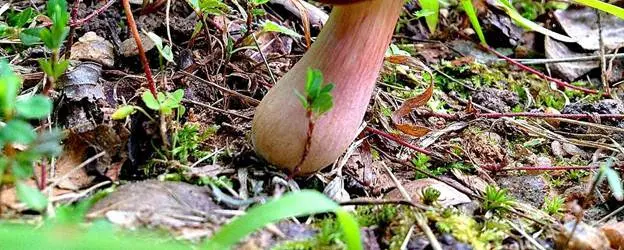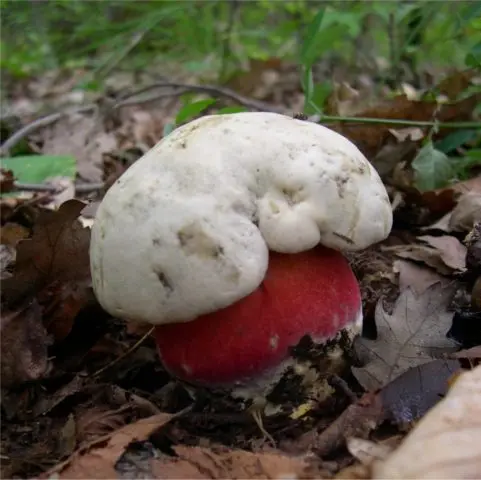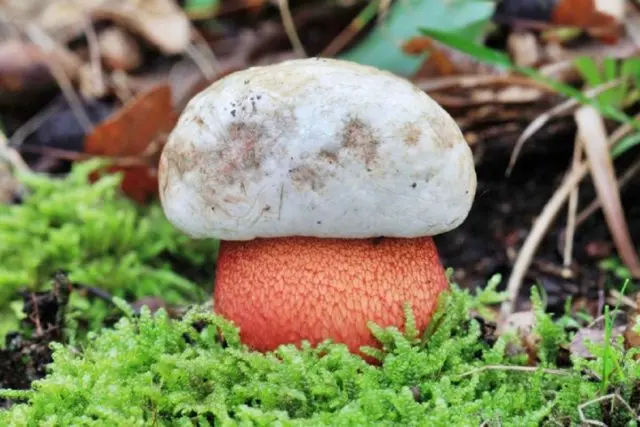Contents
Wolf boletus is an interesting find for lovers of quiet hunting. Despite its similarity to the satanic mushroom, it is an edible species. In order not to confuse the wolf boletus with other representatives of the mushroom kingdom, it is necessary to study its appearance, habitats and other useful information in as much detail as possible.
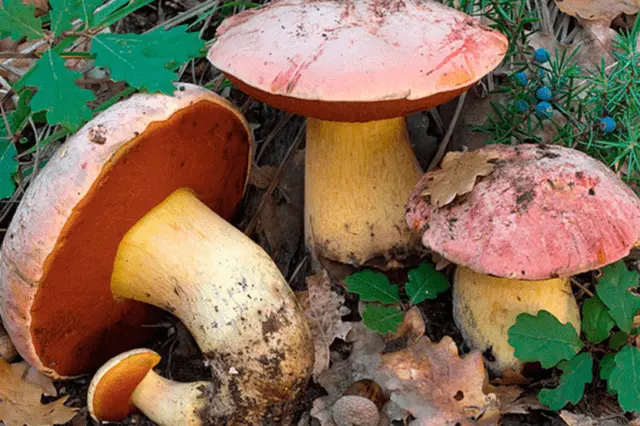
What do wolf boletuses look like
Knowing what a wolf boletus looks like, you can safely cut the mushroom and put it in a basket.
- Hat. It has a fairly large size, reaches a diameter of about 15 cm, sometimes 20 cm. At the same time, in young fruiting bodies, the cap has a semicircular shape, but over time it becomes half-spread or convex, and a smooth narrowing appears along the edges. In young specimens, the top may have a pale gray or coffee color. In grown-up mushrooms, the hat becomes similar to suede fabric, but over time, dryness disappears, and the surface becomes almost glossy and smooth. When damaged, the top of the fruiting body changes the yellow color of the pulp to blue.

- Leg can grow up to 80 mm, and its diameter is 20-60 mm. It has a cylindrical shape, where the expansion is in the middle and bottom, and the narrowing is in the upper part. The color of the boletus leg can be bright or pale yellow, while it is easy to see spots of red-brown color. When damaged, the underside of the mushroom also turns blue.

Where do wolf mushrooms grow
The species may not grow everywhere. He prefers a warm climate, forests planted with oaks, beeches and other broad-leaved specimens. It is most often found in the Mediterranean countries and in the northern regions of Israel, where the soil is limestone.
Is it possible to eat wolf mushrooms
The fruit body of the species belongs to conditionally edible mushrooms and has a rather specific taste, which is valued among gourmets. But wolf mushrooms are not dangerous to health, therefore, after preliminary boiling, they can be eaten.
False doubles
Among the false twins, there are also life-threatening specimens, which you should also find out about before you go on a quiet hunt:
- Bolet is a satanic or satanic mushroom. It has a more saturated color, a mesh pattern is clearly visible on the leg. It is poisonous and unfit for human consumption.

- Pink-skinned boletus. The main distinguishing feature of the fungus is the color of the stem (a shade of red wine) and the presence of a bright red pattern that covers the entire lower part of the fruiting body. Refers to poisonous species.

Collection rules
Wolf boletus does not grow in Our Country. But, like all mushrooms, you need to be able to collect it correctly, following some recommendations:
- Harvesting in places close to industrial plants and roads is dangerous. Mushroom pulp absorbs all harmful substances that are not completely eliminated even when soaked and boiled.
- Fruit bodies that have multiple damage or are completely wormy should also not be placed in a common basket. These mushrooms can be poisonous.
Use
Wolf boletus can be used for food. But there are some limitations and features of the preparation of this “exotic” species:
- The mushroom must be boiled for 15 minutes. Drain the broth and do not use it in the future.
- Fruiting bodies do not go for salting, it is best to marinate them in order to shade the peculiar flavor of this species with vinegar and seasonings.
- Fried, stewed and baked mushrooms will be more delicious if mixed with fresh spices, garlic or sauce. In their pure form, not everyone likes them.
- Fruiting bodies can also be used to make soups. In this case, already boiled raw materials are also used.
- The wolf boletus is not suitable for drying and freezing.
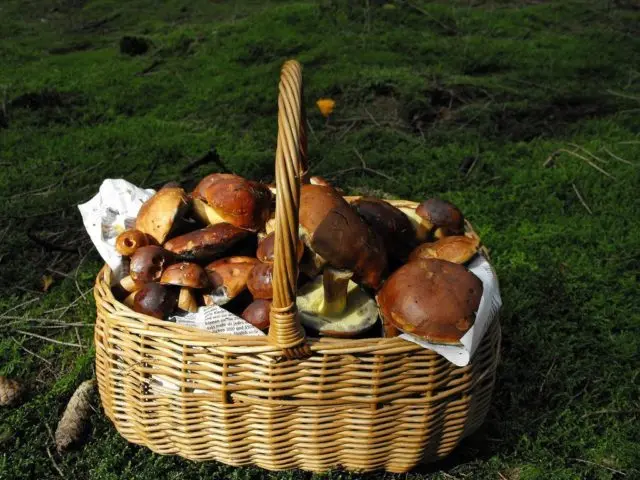
Conclusion
The wolf boletus is a rare specimen on the table of lovers of quiet hunting. Despite its specific taste, it attracts attention with its appearance and impressive size compared to other mushrooms.











